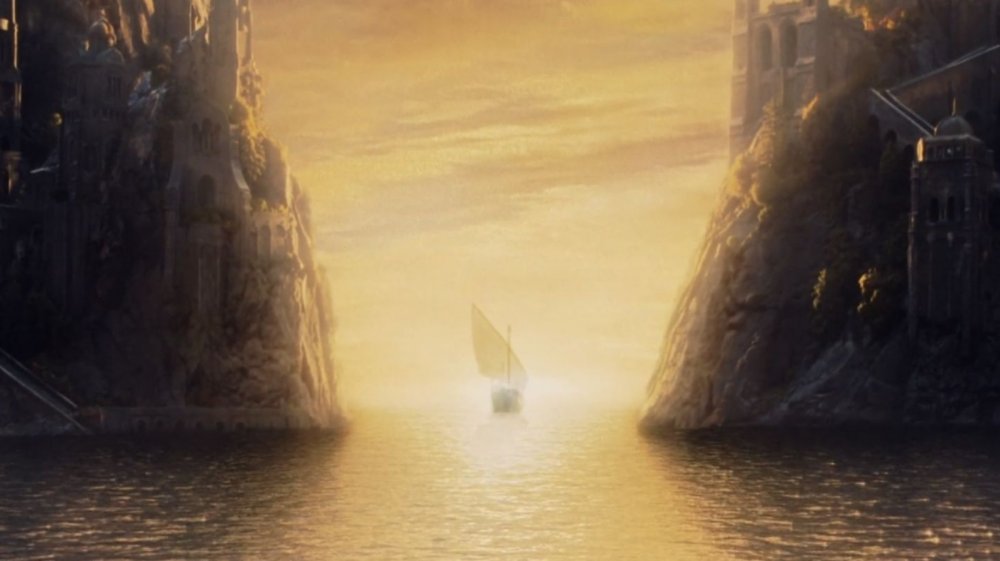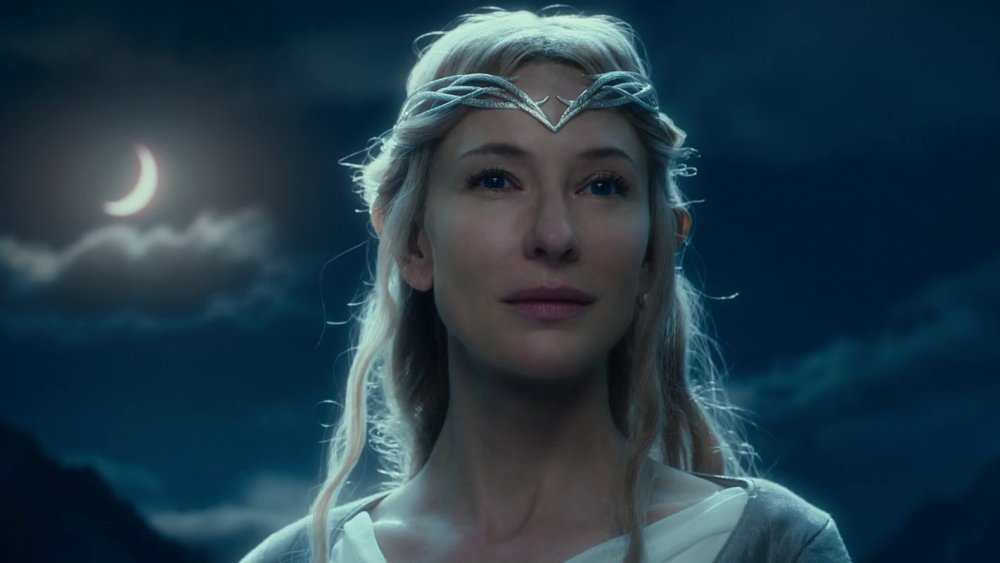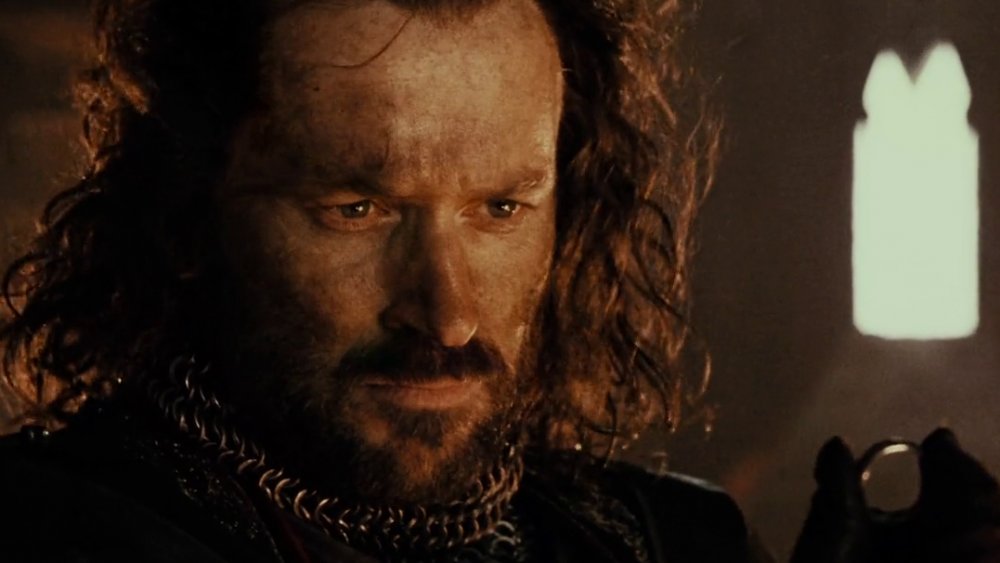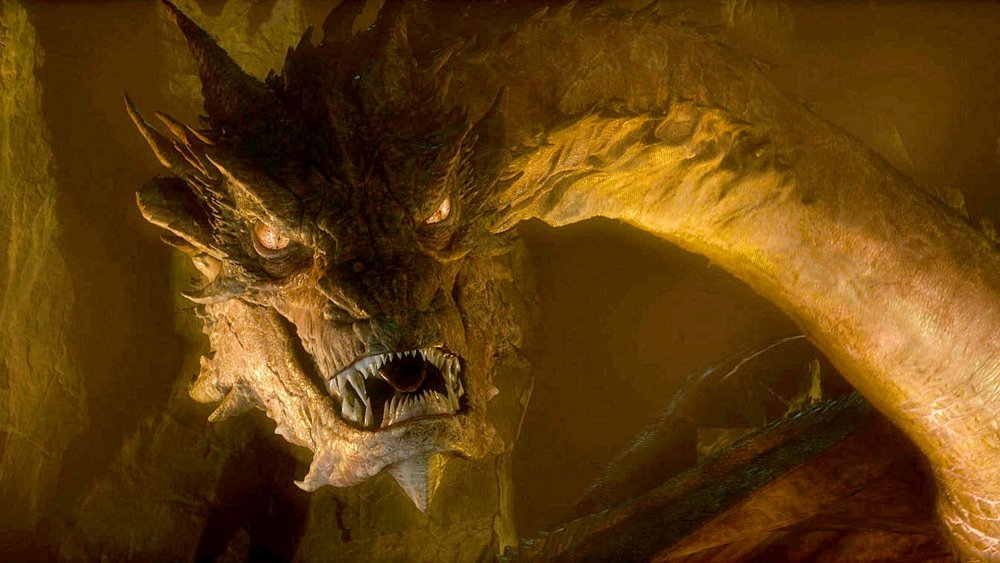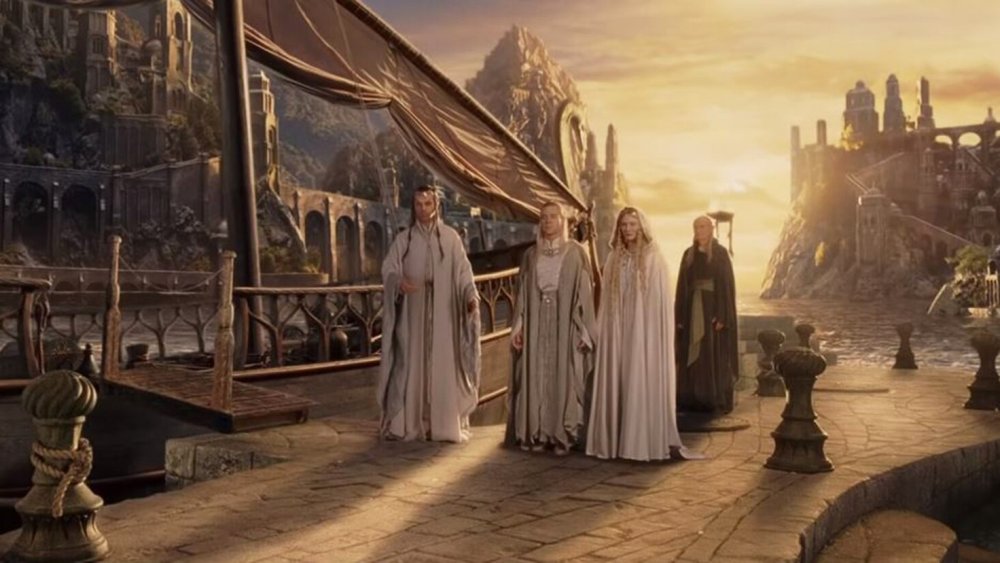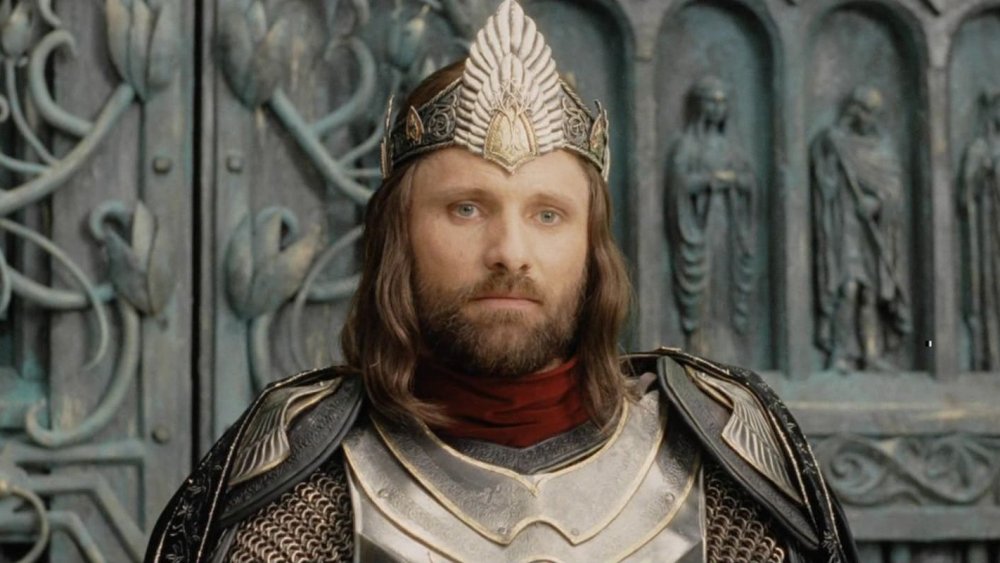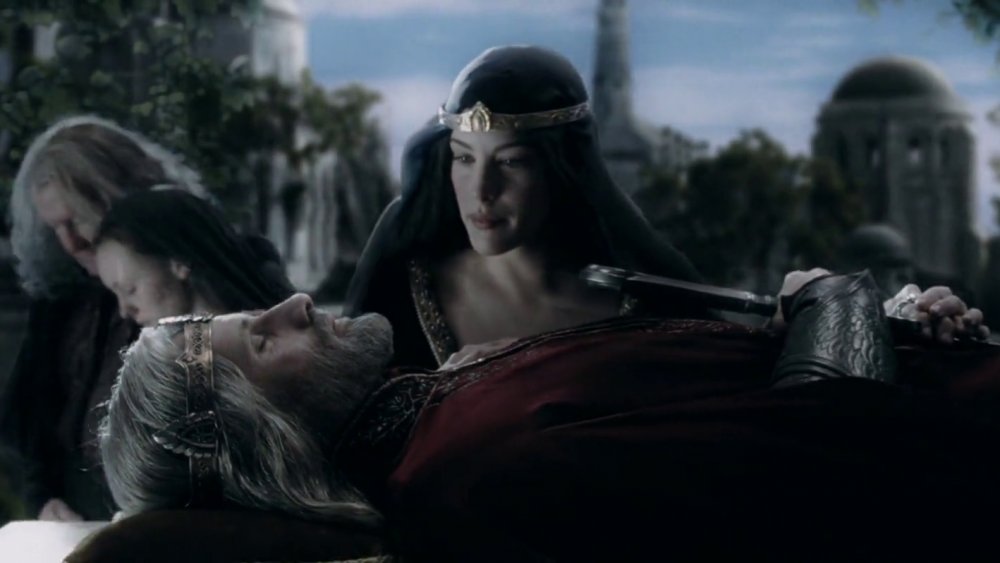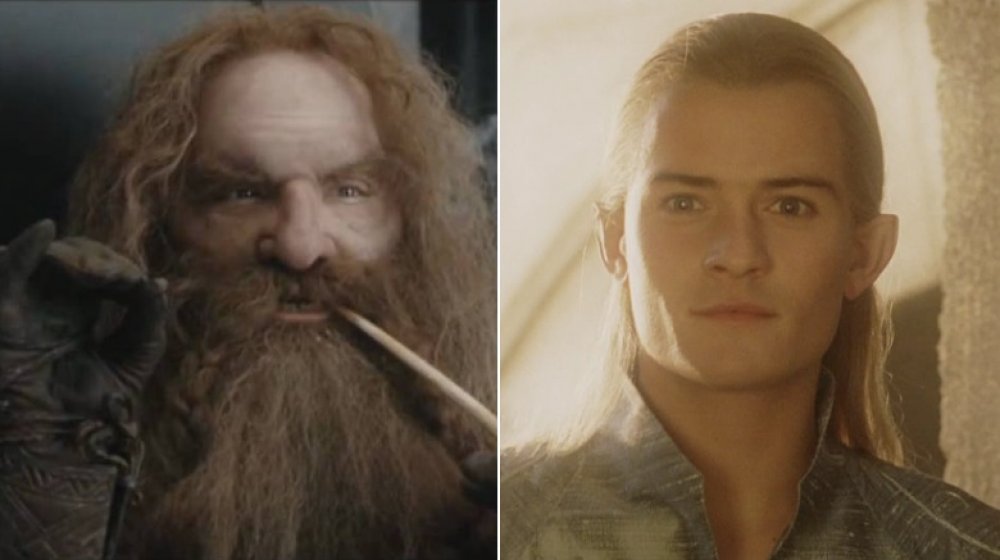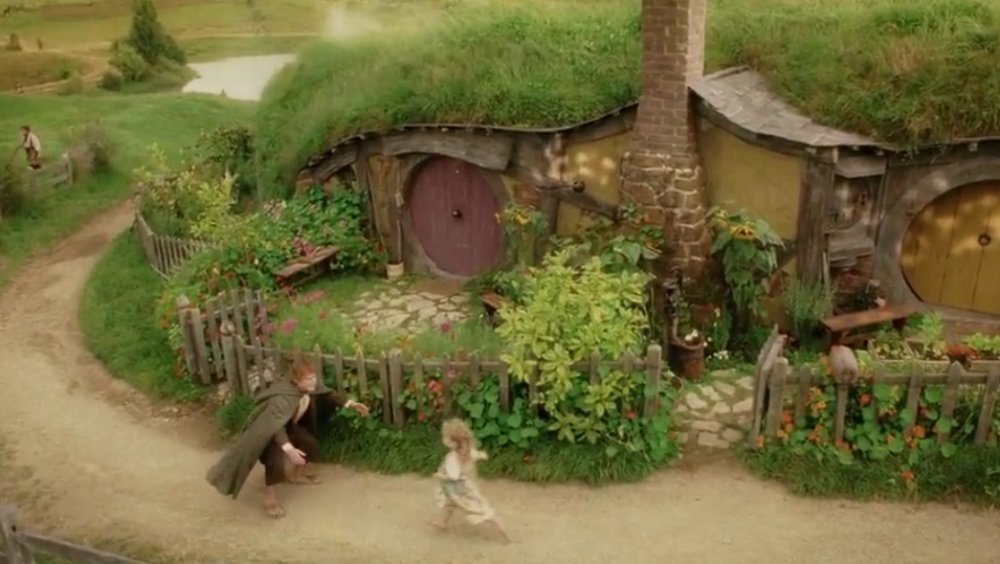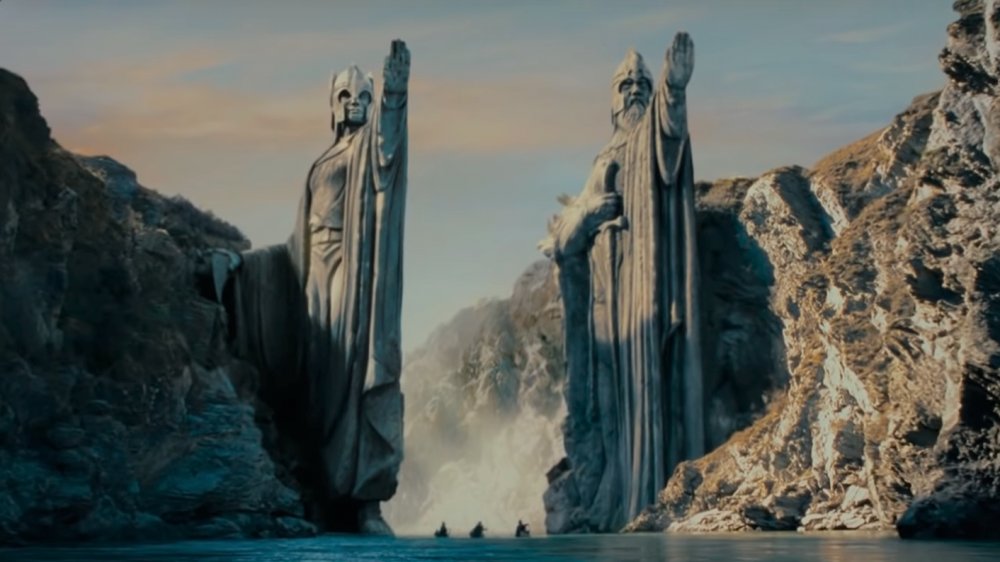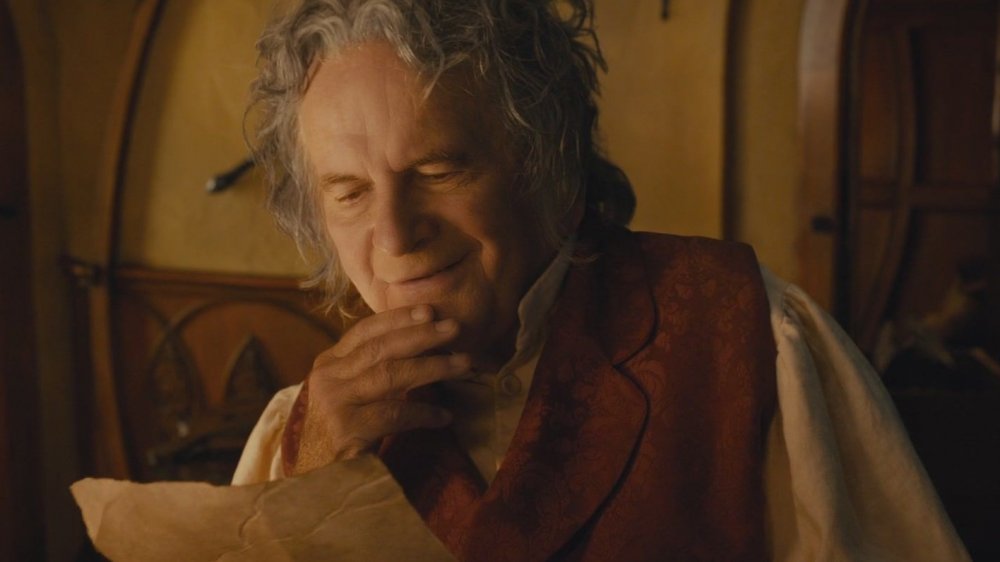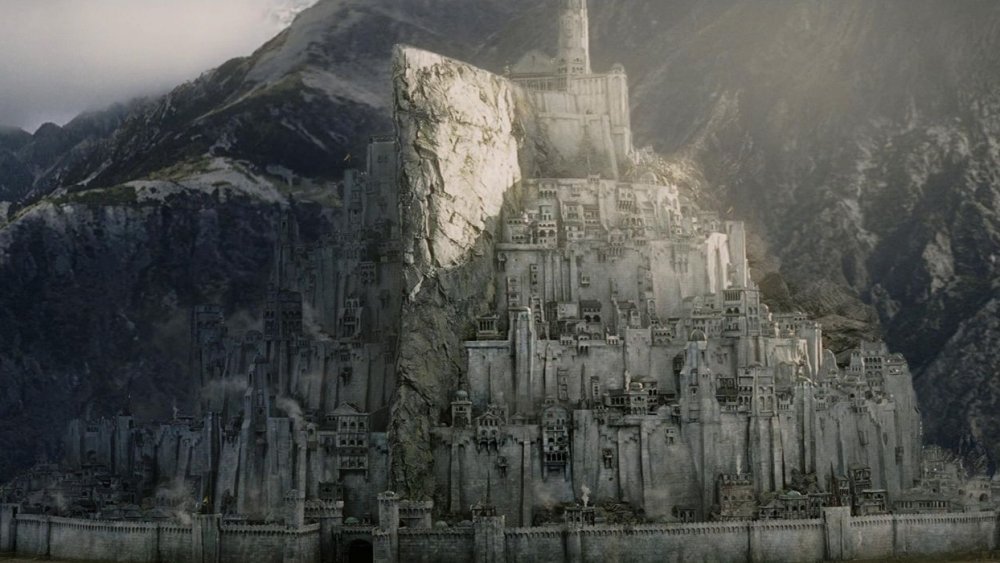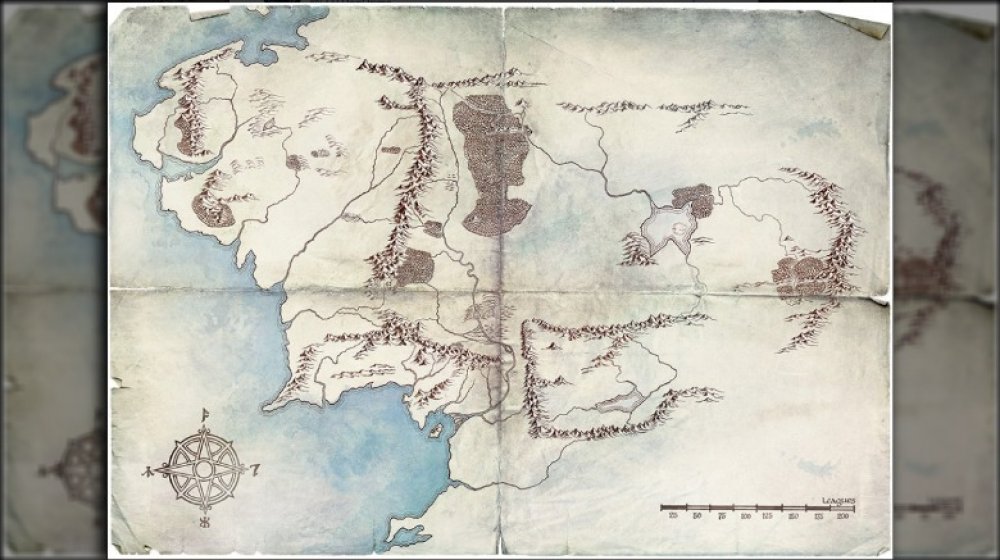Lord Of The Rings' Fourth Age Of Middle-Earth Explained
Middle-earth has a long and complicated history. It starts before time itself and then transitions into huge chunks of vague pre-history in which the Valar, the angelic guardians of creation, shape the world and then fight to preserve it from the powerful traitor Morgoth and his minions. Eventually, Elves, Dwarves, Men, Orcs, and the other peoples of Middle-earth wander onto the scene, and things begin to settle down into a more predictable pattern of events — most of which are divided up and recorded in four "ages."
Each of these ages receives specific attention from Tolkien at various times. The Hobbit and Lord of the Rings stories take place in the Third Age. The First Age and Second Ages are covered in books like The Silmarillion and Unfinished Tales. But what about the Fourth Age? While Tolkien does provide some scattered information here and there, this last piece of the Middle-earth timeline is a bit of an enigma. However, if you take all of the hints and minor references tucked into the nooks and crannies, it's possible to cobble together an idea of what happens after all of the major story arcs wrap up.
We've dug into the original source material in order to do just that. Gathering all of the details we could find, we've done our best to decipher just what Tolkien's largely undocumented Fourth Age looks like. The result: the Fourth Age of Middle-earth explained.
The First Age
If you want to properly understand the Fourth Age, we need to start with a quick recap of the three ages that preceded it. Naturally, this starts with the First Age. This age begins when the Dark Lord Morgoth provocatively sneaks into the Blessed Realm – the continent far to the west of Middle-earth — steals the one-of-a-kind-jewels known as the Silmarils, and hightails it back to Middle-earth. Looking for revenge, the Elves ignore the advice of the Valar and set out in pursuit of the villain.
They spend the next 500 years waging war against Morgoth. Initially, they're successful, but over time, the Dark Lord regains the initiative, completely overwhelming the Elves, who find themselves on the ropes before long. They're only saved from complete defeat when Aragorn's ancestor, Eärendil, sails back to the Blessed Realm and asks the Valar for help. This leads to the catastrophic War of Wrath, in which Morgoth is overthrown, his servants are scattered, and a large chunk of Middle-earth is drowned.
At this point, many of the Elves return to the Blessed Realm, but some of them — along with Men, Dwarves, Orcs, and any other creatures displaced by the sunken continent — head further east, setting the stage for the Second Age.
The Second Age
The Second Age is defined by the rise of Sauron as the new Dark Lord. This age initially is peaceful as Elves resettle in new homes in Middle-earth and Men continue to populate the continent. One group of Men create the kingdom of Númenor on an island off the coast.
Eventually, Sauron arrives on the scene. Disguised as a friend, he helps the Elves forge rings of power and then creates his own ring in secret to control them. This backfires, as the Elves become aware of the ploy and hide their rings. Foiled but not defeated, Sauron then wages war on Elves, Men, and Dwarves, capturing many of the Rings of Power in the process. Nine of these he gives to lords of Men, who become his servants, the Nazgûl.
Sauron nearly succeeds in conquering all of Middle-earth, but when he runs into the thriving, over-powered might of Númenor, he's abandoned by his servants and surrenders – on purpose. Taken back to the island nation, Sauron corrupts its king and many of its people, leading to the entire island being sunk in an Atlantis-like catastrophe.
A group of uncorrupted Númenóreans survive the disaster and settle two kingdoms on the mainland: Gondor and Arnor. When Sauron arrives back on the continent and begins to stir up trouble again, these two kingdoms join forces with the Elves and anyone else they can find. Together, they defeat Sauron and cut his ring off of his hand in the War of the Last Alliance.
The Third Age
The Third Age is the one that fans are most familiar with, particularly because both The Hobbit and The Lord of the Rings take place during this time. With that said, though, both stories technically occur in the last few years of the 3,000-year-long Third Age. Before that, quite a few things happen. About 1,000 years into the age, the five wizards arrive on the continent just as the defeated Dark Lord begins to flex his muscles again.
The kingdoms of Gondor and Arnor are involved in numerous wars over the millennia, as well. Arnor is eventually destroyed, and Gondor loses its king, leading to the long rule of the Stewards. In other news, the Shire is also founded halfway through the age, Rohan is settled 900 years later, and after that, Saruman settles down in Isengard and begins to break bad. The Dwarves also unleash the Balrog in Moria, duke it out with the Orcs of the Misty Mountains, and fight a war with dragons that eventually leads to Smaug attacking the Lonely Mountain.
To top all of the drama off, the One Ring — which had been lost at the end of the Second Age — is discovered, leading to the War of the Ring and the destruction of Sauron, which is detailed in The Lord of the Rings.
Transitioning to the Fourth Age
As the dust settles from the events surrounding the War of the Ring, the Third Age wraps up, and the Fourth Age officially kicks off. The specific date of the beginning of the age can get a bit confusing, but in the Appendix to the Return of the King, at least, it's officially recorded that the age begins when the keepers of the Three Elven Rings — that is, Elrond, Galadriel, and Gandalf — head for the Blessed Realm in the West.
For those of you counting at home, this event takes place on September 29 of the 3021st year of the Third Age. In a timeline Tolkien provided in the appendix to The Return of the King, it states on this date that "Frodo and Bilbo depart over Sea with the Three Keepers. The end of the Third Age."
With the One Ring destroyed and the Nine and the Seven rings (which Sauron had dominated) powerless, it's fitting that the Third Age would wrap up with the departure of the Three Rings, an act that leaves Middle-earth ringless. At this point, the focus shifts from the spiritual and otherworldly activity of Elves, Wizards, and rings to the very down-to-earth power of humans. This new emphasis on mortal Men doomed to die is stated by Gandalf in The Return of the King, when he says to the ageless Treebeard, "The New Age begins, and in this age it may well prove that the kingdoms of Men shall outlast you, Fangorn my friend."
Kicking off with King Aragorn
The most defining thing about the early Fourth Age is the fact that Aragorn is finally, officially the king of the reunited kingdoms of Gondor and Arnor. This makes him the ruler and protector of a huge part of Middle-earth — including the Shire and Isengard — and he proceeds to rule over his new realm for a whopping 120 years. He declares the Shire a free region under his protection, and he gives most of Saruman's old realm to the Ents.
During this time, he also makes his steward, Faramir, the prince of Ithilien — the garden-like land where Frodo and Sam had met him on their way to Shelob's lair. Boromir's brother remains one of Aragorn's chief generals, and, in a letter later in life, Tolkien even explained that the king made Faramir the lead counselor of his chief advisory group, known as the Great Council of Gondor.
Aragorn also stays chummy with Éomer, who rules as the king of Rohan for 65 years. The brothers at heart renew the Oath of Eorl, swearing to come to one another's aid when needed. In The Return of the King, it states that they fought together often, "For though Sauron had passed, the hatreds and evils that he bred had not died, and the King of the West had many enemies to subdue..."
The deaths of Aragorn and Arwen
Aragorn and Arwen get hitched right before the Fourth Age begins. They proceed to rule happily for over a century, and the queen gives birth to a son, named Eldarion, and multiple daughters. One hundred twenty years into the age, at the ripe old age of 210 years old, Aragorn dies. However, he doesn't pass in his sleep or get killed in battle. He willingly gives up his spirit before he becomes old and broken. Arwen, who had become mortal when she chose to marry him, is devastated by this decision and begs him not to go. However, in The Return of the King, he replies that, "if I will not go now, then I must soon go perforce."
It's explained that after Aragorn's death, "the light of [Arwen's] eyes was quenched, and ... she had become cold and grey as nightfall in winter that comes without a star." The queen says goodbye to her children and travels to Lothlorien. All of the Elves have left the Golden Wood by this point, but she wanders through the empty land for a while until she lies down to rest in the same spot where she and Aragorn had gotten engaged long before. There, she quietly dies, and it's said that her green grave will remain "until the world is changed, and all the days of her life are utterly forgotten by men."
Back in Gondor, the royal couple's son becomes king, and in a letter written in 1972, Tolkien briefly mentioned that his reign lasts for roughly a century.
Legolas and Gimli's Fourth Age lives
After the War of the Ring, best buds Legolas and Gimli stay pretty busy. On their way home from war, the friends visit both the Ents in Fangorn and Aglarond, the resplendent caves hidden behind Helm's Deep. After that, Gimli returns to the Lonely Mountain, only to find that the War of the Ring has devastated the region. After a time, he gathers some of his Dwarf-folk, and they settle down in Aglarond. Gimli himself leads the Dwarven colony, becoming the "Lord of the Glittering Caves." This relocation puts Gimli close to Minas Tirith, and The Return of the King states, "He and his people did great works in Gondor and Rohan." Of particular note, they fix the gates of Minas Tirith, which the Witch-king's army had smashed, forging the replacement parts out of steel and Mithril.
Legolas does his part to back up Aragorn's fledgling new kingdom, too. He brings Elves from Mirkwood and settles in Ithilien, which becomes "once again the fairest country in all the westlands." The pair of friends continue to remain busy and happy for over a century. After Aragorn dies, though, Legolas finally follows the calling of his kind and takes a ship across the sea for the Blessed Realm. Interestingly, Tolkien claims that, because of their one-of-a-kind friendship, Gimli is also given a unique allowance to travel with his Elven friend to the otherworldly realm — and that he also went "out of desire to see again the beauty of Galadriel."
Fourth Age events in the Shire
The Shire remains a bustling center of rural activity during the Fourth Age — and Sam, Merry, and Pippin remain at the center of the action. Sam and Rose proceed to have 13 children (including sons named Frodo, Merry, Pippin, and Bilbo), and their daughter, Goldilocks, ends up marrying Pippin's son, Faramir. Sam inherits Bag End, finishes writing the Red Book that Bilbo and Frodo had worked on, and is elected the Mayor of Michel Delving (the unofficial capital of the Shire) for seven consecutive terms.
Pippin remains a knight of Gondor and also becomes the Took and Thain, both important leadership positions in his family and the Shire, respectively. Meriadoc becomes the Master of Buckland, a small colony settled long before by his family just outside of the borders of the Shire.
Eventually, Rose dies, and legend states that Sam, the last of the Ring-bearers, actually goes to the Grey Havens and, following his master, boards a ship bound for the Blessed Realm. In the meantime, a couple of years later, now-very-old Merry and Pippin leave the Shire and head south. They witness Éomer's passing and then die in Gondor, where they're eventually laid to rest next to Aragorn.
An age of Men
Details regarding the Fourth Age are hard to come by, especially after the first couple of centuries. However, it seems clear that, by this point in the timeline, the age of Men truly is dawning. The First and Second ages had been dominated by the Elves and the Dwarves, while the Third Age had seen a fair sampling of all three races. However, by the Fourth Age, the Elves and Dwarves are clearly on the way out, and Men are on the up-and-up.
In the prologue to The Fellowship of the Ring, it's explained that some of the High-elven folk remain in Middle-earth for a time, led by Elrond's sons and eventually joined by Galadriel's husband, Celeborn. While it isn't known when Celeborn finally sails to the Blessed Realm, when he does go, he takes with him "the last living memory of the Elder Days in Middle-earth."
For the Dwarves, they remain on the continent, and, judging from Gimli's colonization efforts, even appear to expand their dominions for a time. Nevertheless, while they don't have the same Grey Havens escape valve that the Elves possess, they do slowly drift out of sight, out of mind, and eventually right out of Middle-earth history.
An unfinished sequel
Apart from The Lord of the Rings and The Hobbit, most of the Middle-earth material that we have today was published by J.R.R. Tolkien's son, Christopher Tolkien, after his father's death. This lack of production didn't come from apathy or laziness, though. It seems to have been rooted in a deep-set perfectionism (along with some early hesitation from potential publishers) that held the great author back from publishing other material.
Nevertheless, it turns out that Tolkien definitely tried to publish more Middle-earth content during his life, including a sequel to The Lord of the Rings. Called "The New Shadow," the story appeared to be set a century or so after Aragorn's death — putting it well into the Fourth Age. The concept toyed with a resurgence of evil in Middle-earth long after the events of the War of the Ring had become ancient history. However, Tolkien never got more than a handful of pages into the story before he gave up. In a letter written in 1964, he referred to the barely started project as "sinister and depressing," adding that it had the making of a "thriller" but that it was "Not worth doing" — a sentiment that we, with all due respect, heartily disagree with.
When does the Fourth Age end?
Tolkien is famous for writing incredibly complex, comprehensive letters in response to questions that he received from fans. He would fill out thousands of words explaining the mechanics and history of his world to an audience that wasn't even familiar with the deep history of The Silmarillion yet.
In one of these letters, he provides a hint as to when he personally believed the Fourth Age ended — or at least how it fits into the larger history. In the letter, he points out that he imagines the 20th century to be roughly 6,000 years after the Third Age. He initially states that this would likely put us somewhere around the end of the Fifth Age, judging from the approximately 3,000- to 3,500-year-long Second and Third ages that came earlier. However, he then clarifies that the ages "have, I think, quickened; and I imagine we are actually at the end of the Sixth Age, or in the Seventh." While it doesn't give us a definitive answer as to when the Fourth Age ends, it does seem that the age was, at the most, 3,000 years long and likely shorter than that.
Is LOTR low fantasy?
High fantasy and low fantasy are nebulous topics with vague definitions. However, in general, low fantasy tends to revolve around the idea that a story takes place in a real-world setting — a concept that Tolkien wrestled with committing to throughout his life. At various times, Middle-earth waffled between the two extremes of existing in its own independent world and being a part of the author's own attempt to create a mythology that directly connected to English history.
There is a long letter to a fan in which he expressed both of these concepts. First, he starts out by explaining that "all this is 'mythical'...as far as I know it is merely an imaginative invention to express...some of my (dim) apprehensions of the world." He goes on to say that if it were supposed to be fictional "history" it would be hard to fit into actual history itself. But then he explains that he used his own "mother-earth" for his story, preferring that to placing it on an entirely alien world. He also defines "Middle-earth" is a modernization of an old word for the "world of Men."
All of this begs the question, is Middle-earth simply supposed to be a fantastical pre-history of our own world, or is it its own high fantasy story, completely separated and simply using the well-known quantity of a "Middle-earth" as a foundation? Perhaps we'll never know.
